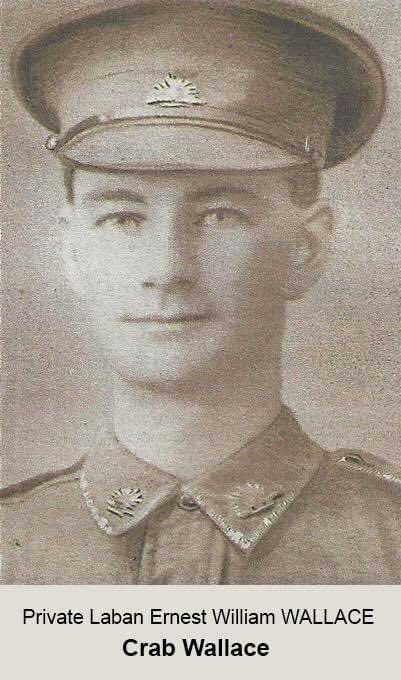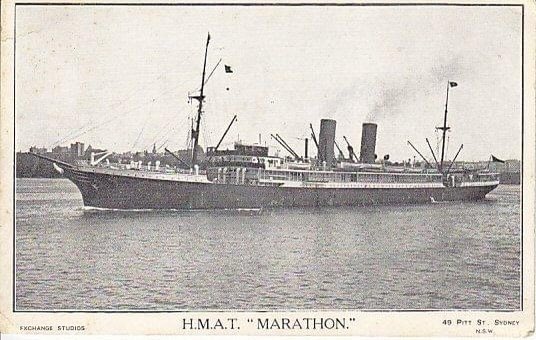On ANZAC Day 100 years ago, my grandfather, Private Laban Ernest William Wallace (Crab), was in France fighting the Germans on the western front.
He enlisted in the New England region of New South Wales at the age of 19, and joined the 3rd Division, 33rd Battalion, Australian Imperial Force. The battalion was known as “New England’s Own”.
They weren’t just a bunch of bush boys put in uniforms and given .303 rifles, they were the elite troops of their era. Led by General Sir John Monash as original Divisional Commander, and Lieutenant Colonel Leslie Morshead (later Rats of Tobruk commander).
They received extensive training in Australia before departing for war, and a further 5 months training in England before engaging in battle on the western front.
They left Sydney on troop ship “The Marathon” in May 1916, and entered the trenches for the first time six months later on 27 November 1916.
Their first major battle was the battle of Messines, launched on 7 June 1917. The battalion captured ground and held it for several days while under attack from an intense artillery bombardment. One soldier wrote that holding the line at Messines was far worse than taking it.
Their next major battle was around Passchendaele on 12 October 1916. The battlefield had been deluged with rain, and thick mud bogged the advancing troops and fouled their weapons. The battle ended in a disastrous defeat.
By April 1918, Crab had already survived numerous battles, and New England’s own was rushed into the area around Villers-Bretonneux to repel a massive German attack.
An exodus of Russian troops had returned home due to the revolution, which meant numerous German divisions were freed from fighting on the eastern front and were moved to the western front. It brought about the massive German spring offensive.
From 17 to 24 April the Germans launched bombardments with mustard gas around Villers-Bretonneux killing over 1,000 Australians.
On 25 April the Germans attacked the village of Villers-Bretonneux with four divisions. Australian troops spent ANZAC Day engage in a fierce battle, including hand to hand fighting.
Villers-Bretonneux initially fell to the Germans, but was soon retaken in a counter attack by Australian troops, who introduced strategies never before used in the war.
In particular, Australians had the audacity to launch the first surprise attack at night and without artillery support. It was a decisive victory, the Germans were cut to pieces.
Crab didn’t talk much about the war, but on one rare occasion he said the toughest battle he was in was Hangard Wood.
On 30 March 1918, reconnaissance planes gave the all clear to advance across open fields. But German machine gunners had hidden in haystacks, and when the Australians advanced, the Germans opened fire. They suffered heavy losses, but were still victorious.
8 August, they fought at the battle of Amiens, and in the rapid advance that breached the Hindenburg Line at the end of Septemsber and brought about the end of the war.
Major battles at:
- Messines
- Ypres
- Polygon Wood
- Broodseinde
- Poelcappelle
- Passchendaele
- Villers-Bretonneux
- Somme
- Avre
- Amiens
- Albert
- Mont St. Quentin
- Hindenburg Line
- St. Quentin Canal
- Messines
- Ypres
- Polygon Wood
- Broodseinde
- Poelcappelle
- Passchendaele
- Villers-Bretonneux
- Somme
- Avre
- Amiens
- Albert
- Mont St. Quentin
- Hindenburg Line
- St. Quentin Canal
Crab had said “I didn’t expect to survive the war, and I don’t know how I did”. He also said “War’s a mugs game”. His way of summing up his disapproval.
The book, ‘Never a Backward Step’, a history of the 33rd Battalion, notes that from the first enlistment of 1,023 men, Crab was one of only 19 men to survive and fight continuously to the end of the war. That’s a survival rate of just 1.9%.

 Read on Twitter
Read on Twitter





